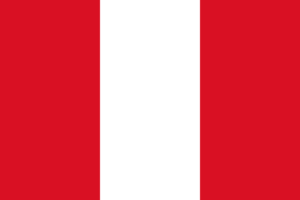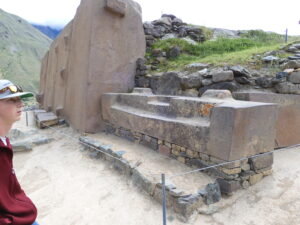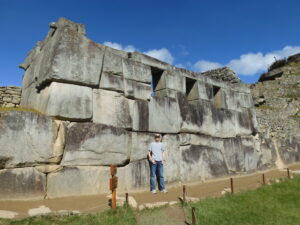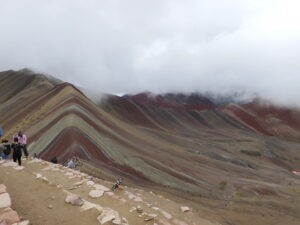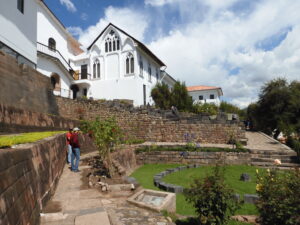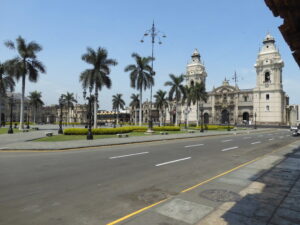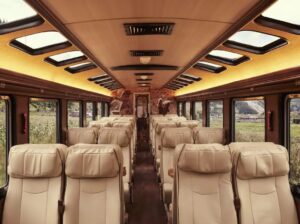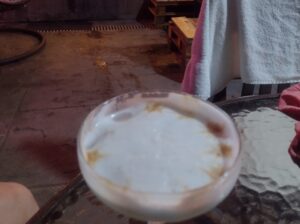Pisaq
Worth Skipping Ceviche
Any time I am traveling, I always seek out the local Church of Christ. I grew up in the Church of Christ and have been a member since I was baptized in 1986 at the age of fourteen. I especially enjoy seeing the work of the Lord through my brothers and sisters in so many different places. There are four Iglesias de Cristo in Cusco, Peru. The congregation I could find the most information about in terms of whereabouts and service times was the Iglesia de Cristo, Wanchaq, which meets in the area of town near the airport on Sundays at 10:00.
In my experience, Latin American churches have all been especially welcoming and enthusiastic about receiving visitors. If it is possible, the congregation we visited in Cusco surpassed them all. I don’t think there was a member there who did not come by specifically to hug us, kiss us, or at least shake our hands. My dad took special joy in this, and having visited less foreign congregations than I have was especially moved by this reception. We attended here both Sundays we were in Cusco, and in both cases, the services were enthusiastic and uplifting. The second Sunday we attended, we even shared in the joy of a baptism.
As with some other Latin American congregations I have visited, the majority of the songs are translations of hymns we are familiar with in the United States, or translations of contemporary youth devotional songs. I consider my Spanish low-intermediate. But even for those just developing Spanish, it is possible to read the Spanish lyrics off of the slides and harmonize with the familiar tunes and thus participate in the song service. I always bring a Reina-Valera 1960 Spanish language Bible. This version is almost universally used in the congregations I have visited. I find following along in the Spanish Bible to be helpful in my Spanish learning process. I also often read children’s books in Spanish. The familiarity of the Biblical passages helps me to develop context, and the simplicity of the children’s books is also helpful. I will say, though that the frequent use of the vosotros form of verbs in the RV60 is kind of peculiar.
It was great to visit with the brothers in Cusco. It was edifying to worship with them, and to see the strength and health of the church in Peru. We also met several visitors, including one family from Switzerland there to finalize and expensive and time consuming adoption process. They kindly invited us to join them for lunch at a ceviche joint around the corner from the building. Normally, we would have done so. I had it in the back of my mind to head out to another archaeological site called Pisaq that afternoon. It is also true that while I absolutely love ceviche, I knew my dad was not about to eat raw fish, and might struggle to find anything palatable in what might be considered a more authentic Peruvian restaurant.
(Continued)
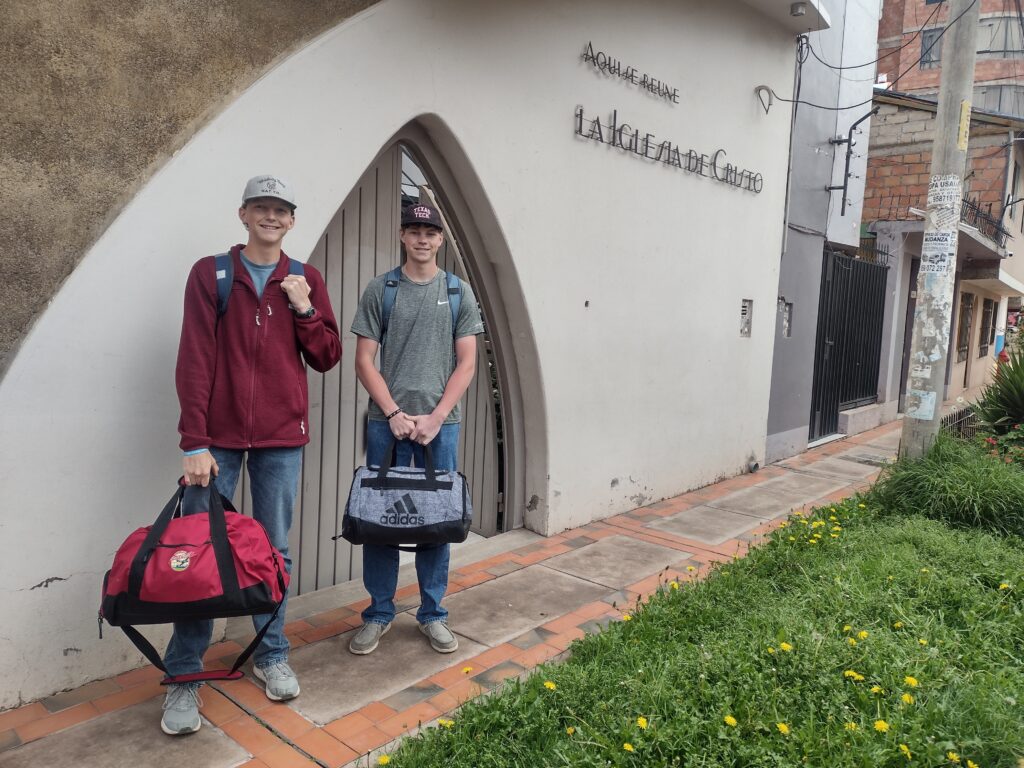
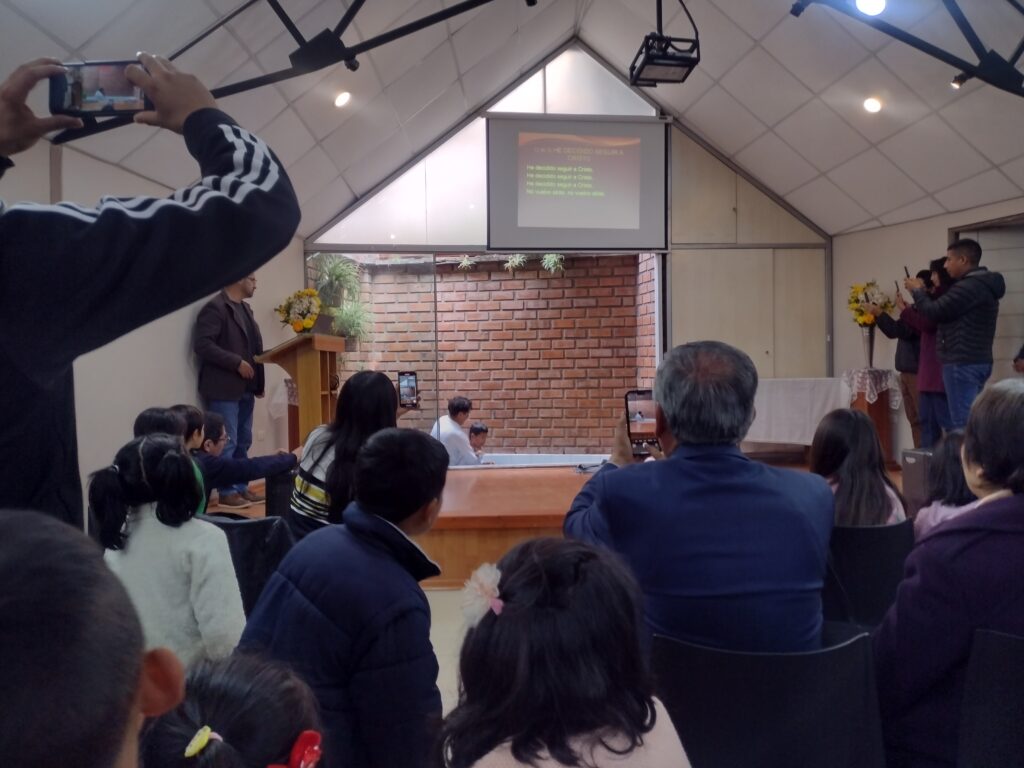

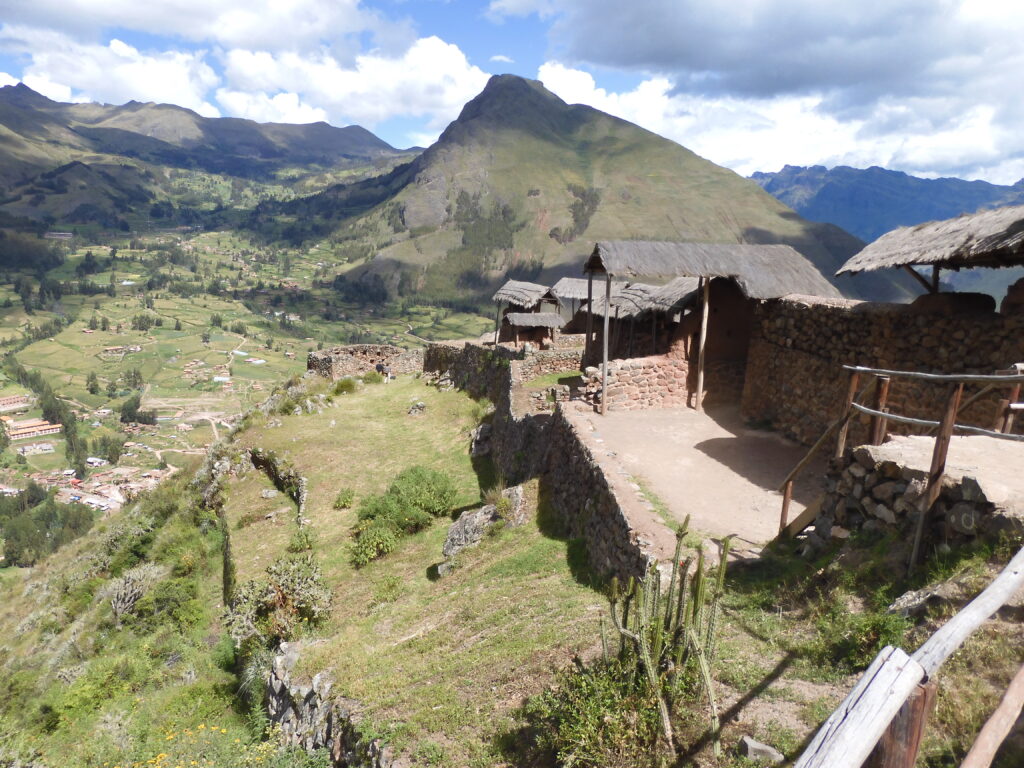
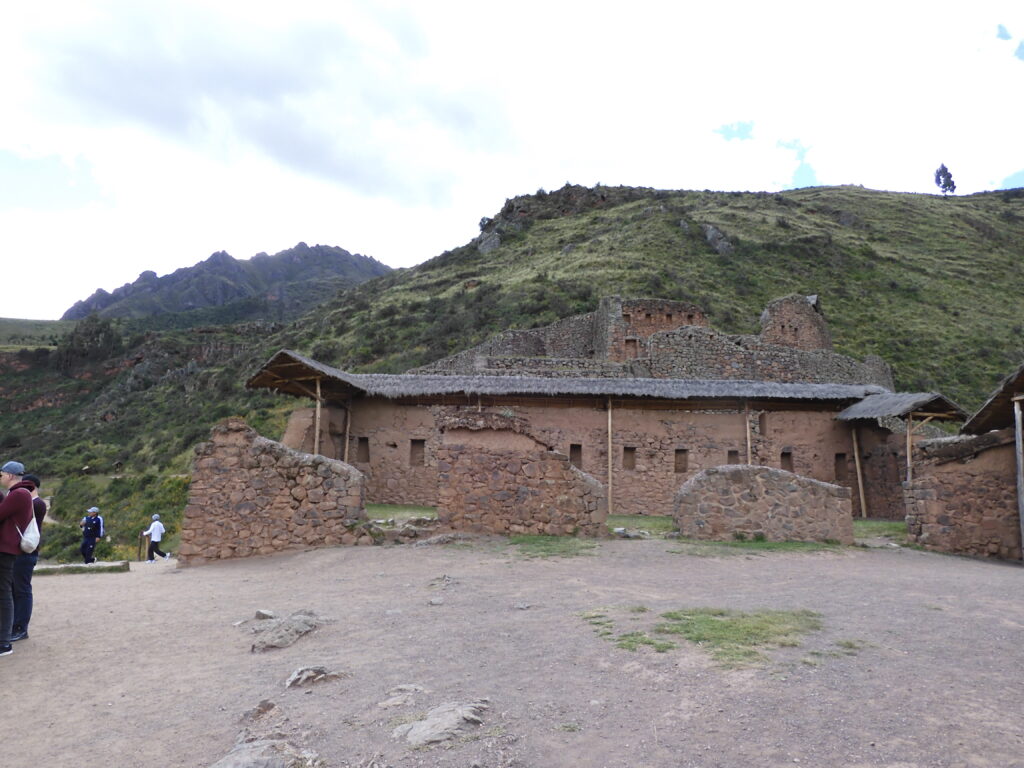
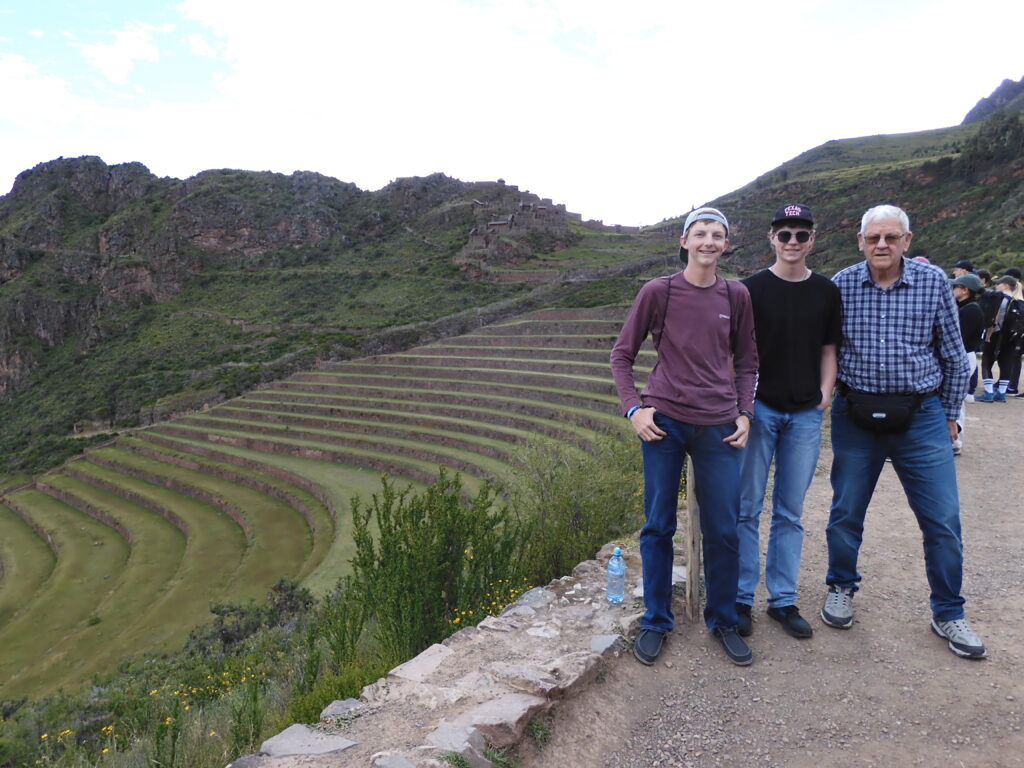
Although it is far from cost effective, we caught an Uber from church in the heart of Cusco. Our driver took us on a beautiful hour long drive through the Sacred Valley to the village of Cusco. Like many Inca sites, the Pisaq archaeological park is high on a hill overlooking the neighboring village. I should also say that our visit to the Cusco area in general was made during what would be called a “shoulder season.” Early March falls toward the tail end of the rainy season in the Peruvian highlands. Weather can occasionally still be stormy or cloudy. This did occasionally impact our trip. On the other hand, the entire region was a glittering, vibrant green. Several of our drivers informed us that when most tourists pass through in July and August, much of the area has a more dried, yellowish hue. This verdant background was first apparent in its full glory on our trip to Pisaq.
Pisaq is worth a day trip, or as we did it, a half day trip. It is a majestic site with spectacular views of the village and valley below. It is included in the Boleto Touristico. The site itself is a few miles from town and substantially above it. If you are making your own way out to it, as we were, it is most convenient to get a taxi or Uber to the archaeological site. It is likely you will not find a taxi to bring you back to town. It would be a relatively simple matter to catch the bus back from the village of Pisaq to Cusco. In that case, you’d have to walk back down to the village. Although this is about three miles, it would at least be all downhill. Since my dad was unwilling to do this, we just asked our Uber driver to wait for us and arranged a cash payment to haul us back down to the market, wait for us there a half an hour or so, and then drive us back to Cusco. This was easily arranged, though by far not the most cost effective option. For a more complete discussion of travel options in the Peruvian highlands, click here. (Continued)

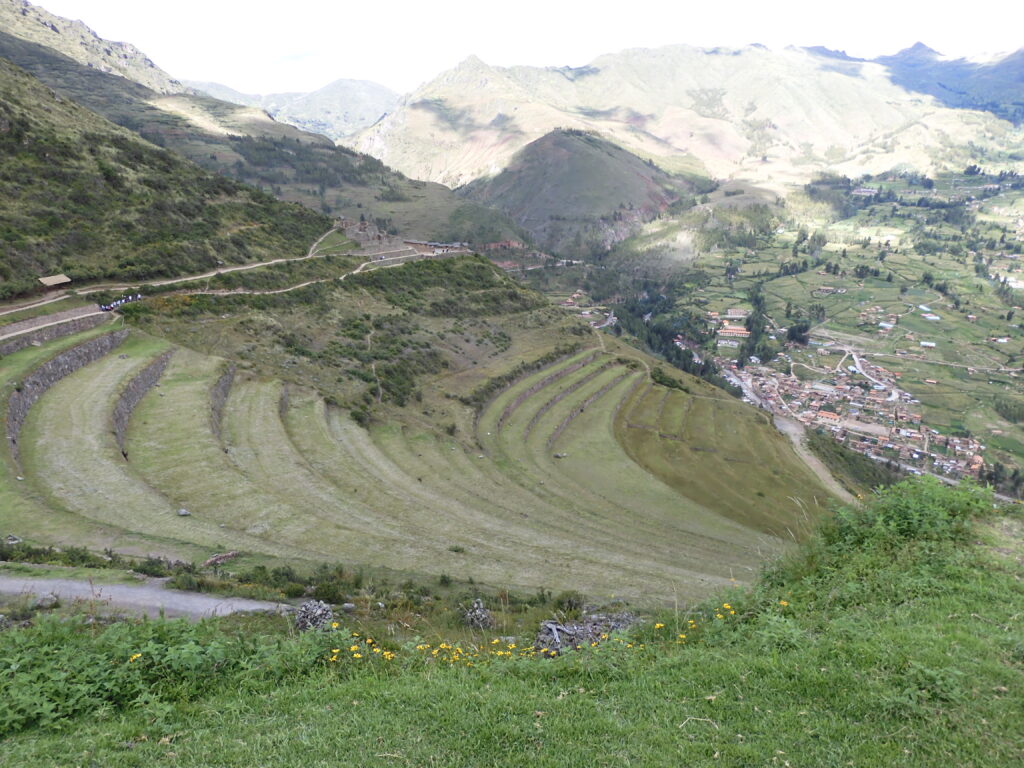


Pisaq has a huge set of terraces, in addition to the citadel-like nature of the main buildings. Some have postulated that this site was a resting place for Inca nobility when they were between campaigns. It certainly seems as if it could have been a military stronghold or oversight position. For less mobile folks, a ride up to the site will access enough of it to still be enjoyable, and the views of the valley and village below are worthwhile. Hiking opportunities are there for the more adventurous.
We spent a few hours at Pisaq, and might have spent even more time hiking around to the more distant outposts at this location had we arrived earlier, and had we all been of the same physical ability. As it was, dad was patient while the boys and I did some limited hiking beyond the main site. We got out of phone range pretty quickly and had some difficulty coordinating. But we linked back up and our kind driver showed us to the marketplace in the village. It was later in the day than the high point for that market, but it was still enjoyable to visit, and there were plenty of souvenirs, empanadas, and other items for sale.
We found out during the course of driving out and back that our driver – like just about everyone in Cusco – is a “tour guide (link).” We didn’t feel inclined to engage an official tour, but I did want to try to see the Maras Salt Mines, the site of Moray, and the Ollantaytambo ruins on the way to the train we would catch near the last site en route to Machu Picchu village. This was arranged, and thus on Monday the 11th, we were able to visit several important sites on the way to the crown jewel of our trip.

